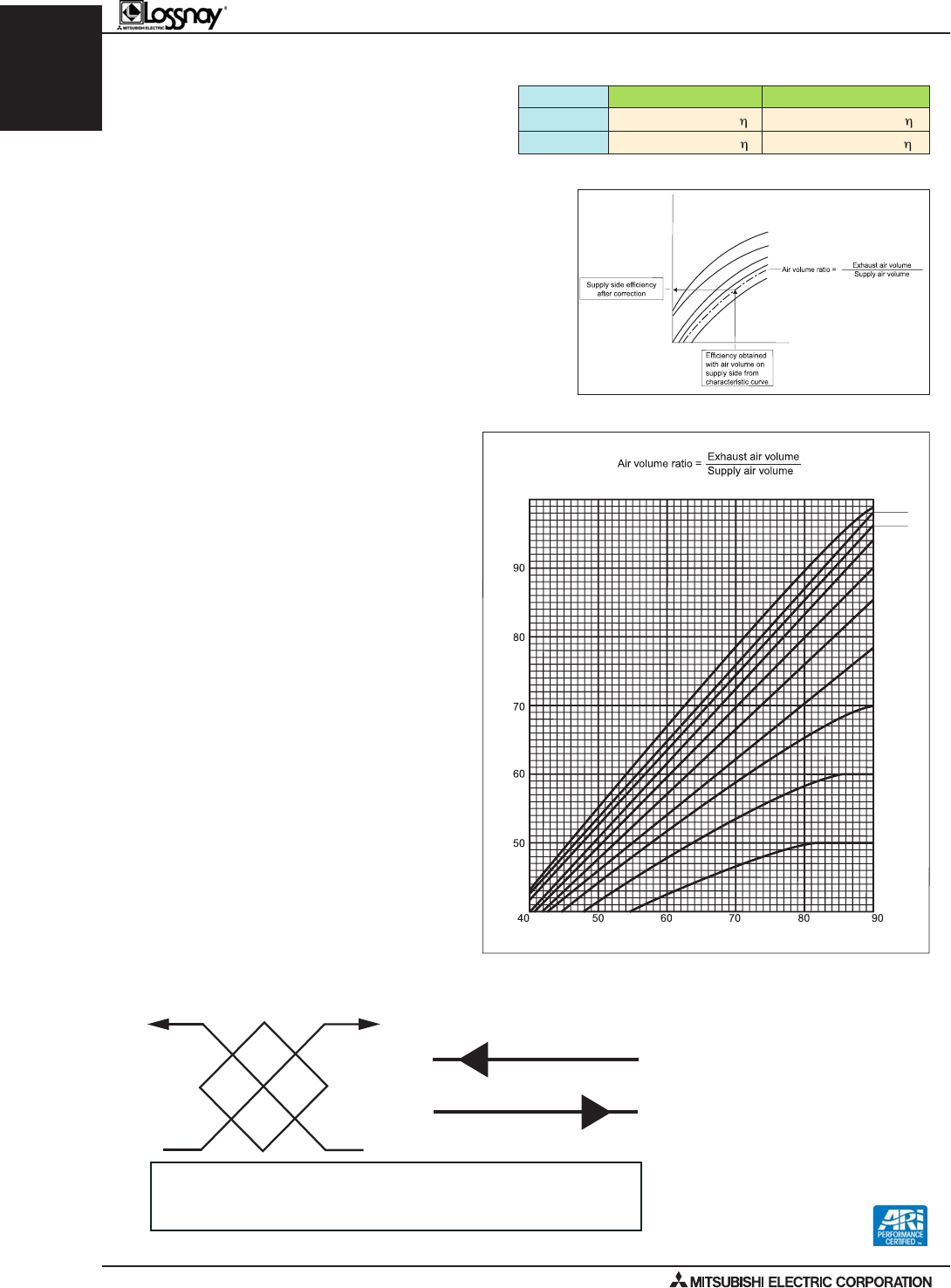
LGH-F-RX3-E (Feb. 2009)
LGH-F-RX3-E
Performance Certied
to ARI 1060 Standard
ERV-4
2.5. Lossnay
®
Operation / Ventilation Modes
Supply side Exhaust side
Temperature t
SA= tOA - (tOA- tRA) x ttEA= tRA + (tOA - tRA ) x t
Enthalpy i
SA = iOA - (iOA - iRA ) x iiEA = iRA + (iOA - iRA ) x i
Calculation of Supply Air Condition After Passing Through Lossnay
®
If the Lossnay energy recovery efciency and the conditions
of the room and outdoor air are known, the conditions of the
air entering the room and the air exhausted outdoors can be
determined with the following formulas in the table.
2.4. Unbalanced Airow Correction
In unbalanced applications, it is necessary to calculate the pressure
drops of the two air streams separately using the applicable chart
and correct the efciencies using the instructions and the K-Factor
chart below.
1. In unbalanced airow applications, the external
static pressure must be calculated for each air stream
separately using the ESP curves for the applicable
product.
2. The temperature effectiveness must also be
corrected using the K-Factor chart (at right).
A. Determine which correction factor to use by
calculating the K-Factor (Air Volume Ratio).
B. Determine the balanced airow effectiveness
from the applicable product graphs using the outside
airow (CFM).
C. Correct the effectiveness for the unbalanced
airow by nding the Original Exchange Balanced
Efciency (%), then nd the appropriate K-Factor
Curve in the chart. From that point, read the
Corrected Exchange Efciency (%) on the left side of
the chart.
(K-Factor)
Energy Recovery Efficiency Correction Curve
1.4
1.3
1.2
1.1
1.0
0.9
0.8
0.7
0.6
0.5
100
Corrected Exchange Efficiency (%)
Original Exchange Balanced Efficiency (%)
Energy Recovery
Efficiency (%)
(K-Factor)
1. Energy Recovery — Heat Exchange
Lossnay
®
technology is a full enthalpic energy exchange that recovers both
sensible energy or “heat recovery” and latent energy or “moisture transfer”
between air streams.
2. Bypass — No Exchange
3. Automatic — Heat Exchange: Bypass
• In cooling, the automatic mode
accomplishes an energy savings function.
When the inbound outside air is ≥7.2º F
cooler than the outbound exhaust air, the
bypass damper opens in the outbound
airstream. This increases airflow and
provides cooler air to the conditioned
space.
• In heating, the automatic mode
may not be suitable without supply-air
preheating.
